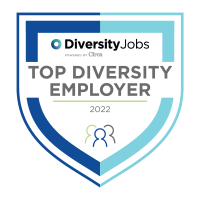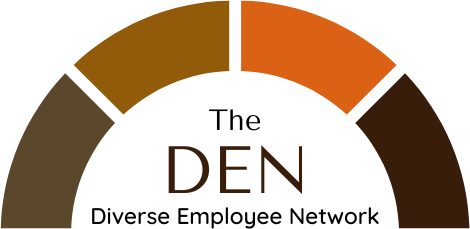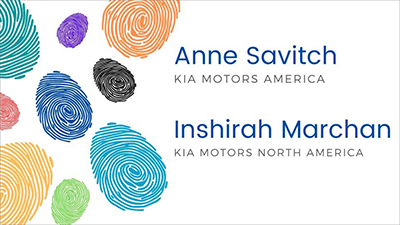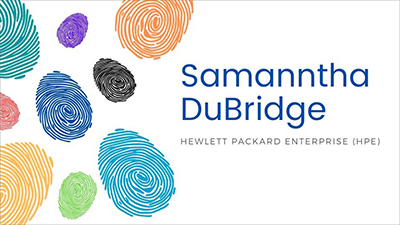Diversity, Equity and Inclusion (DE&I)

DiversityJobs.com Top Diversity Employer
SIRVA Is pleased to announce that we have been named a Top Diversity Employer by DiversityJobs.com. This award was given to a select group of employers that have shown consistent dedication to recruiting and hiring from all diversity groups.
Useful Resources
SIRVA’s Commitment/Mission Statement
At SIRVA, we’re committed to cultivating a workplace and an ecosystem that reflects the diversity of the global organisations that we serve. We recognise that building an inclusive, engaged company culture results in empowered employees that reflect a wide range of approaches and perspectives. Those perspectives lead to new ideas. New ideas lead to innovation and excellence. Our approach to diversity, equity and inclusion is driven by a commitment to these values and a belief that diversity makes our company stronger.

Ricky Aow
Sales & Account Management Business Analyst (Victoria, Australia)
This industry attracts passionate, down-to-earth people from diverse backgrounds, many of which who have been in the industry for 10, 20, 30+ years. I have a marvellous manager, who regularly takes time to update me, I enjoy the flexibility and challenges of the work. The business leaders are personally invested, dedicated, and bring energy and commitment to the team. Recently I was chuffed when a leader from a different business unit nominated me for a STAR award. The thing I treasure the most is the friendships I have made at SIRVA; friendships and memories that I will cherish
SIRVA's Employee Resource Groups (ERGs)
ERGs are employee-led, self-directed voluntary groups that offer opportunities to network internally, to attract a diverse employee base, to provide the inclusion of ideas and solutions, and to create opportunities for mentoring and career development.
SIRVA is proud to announce the formation of our first two Employee Resource Groups!

DEN –The Diverse Employee Network (People of Colour)
Mission: SIRVA People of Colour Employee Resource Group (ERG) is open to all employees. The ERG aims to advance a diverse and inclusive work environment with a particular focus on people of colour. Working with a dedicated network of diverse professionals, the ERG undertakes activities to attract, retain, empower and inspire employees of colour. These efforts are geared toward helping members gain leadership experience, get involved in the SIRVA community and develop new ideas to help drive SIRVA forward.
 SOL – SIRVA Out Loud (LGBTQ+)
SOL – SIRVA Out Loud (LGBTQ+)
Mission: Our mission is to create a safe and supportive space for LGBTQ+ SIRVA team members and their allies to thrive and be celebrated, so that we can provide advocacy for equity and an inclusive experience in all settings.

Recruiting & Outreach

- Internships
- Recruiting
- Partnerships
- Corporate Presence
Organisational Development

- Engagement
- Performance
- Promotions
- Pay Equity
Mentorship

- Career Development
- Interest Groups
Education & Training

- New Hire Onboarding
- Inclusiveness
- Standards & Training

Harriet Kwawukume
Client Finance Team Lead (Prague, Czech Republic)
“Being part of the SIRVA family has been a marvellous experience in my career growth. Having joined the finance team and getting to encounter the diverse multicultural environment has been great. SIRVA helped me to develop as an Analyst by investing in my skills and potential and bringing out the best in me and I’m currently leading one of the teams in finance. I foresee an empowering future here and I look forward to it!”
Mobilising Diversity: Customer Stories
Building and Leading Equitable and Inclusive Talent Management
Diversity, equity and inclusion (DE&I) is ever-evolving. There is no one-size-fits-all approach. In this three-part series, you will hear from three of our clients (Kia Engines, Ardent Mills and HPE). Our clients all have expertise in mobility and are helping change the landscape for DE&I efforts; they will share their stories as an effort to help other organisations learn from peers on how DE&I intersects with mobility and talent management.
COVID-19 – Remobilisation Considerations: Setbacks and Second Waves
As organisations strategise and plan for remobilisation, it will be critical to anticipate and prepare for setbacks and challenges, as additional COVID-19 case surges may stall goals and intended mobility-related activities. This document will explore possible scenarios and strategies that organisations can consider when preparing for unknown remobilisation barriers.
The Current State of Mobility Readiness
Organisations have been monitoring ‘mobility readiness’ in their global operating locations, particularly in locations that are considered critical for organisational success. Based on our conversations with clients, many organisations are anxiously awaiting the lifting of mobilisation restrictions and, in turn, an easing of the business pressures caused by resulting talent shortages and an inability to meet business needs and priorities. Some businesses are focused on the repatriation of employees to their home locations. Other organisations are focusing on longer-term workforce planning to minimise the need to import talent, thereby reducing the impact of a future global crisis or disaster. Regardless of the driver, the remobilisation process will be location specific, and organisations should be prepared to navigate additional pandemic waves as part of their remobilisation strategy.
Signs of Potential Surges and Setbacks
As organisations monitor locations and evaluate them for remobilisation readiness, they will also need to consider indicators that point to potential surges and setbacks. These include:
- An increase in confirmed cases of COVID-19
- An increase in the number of COVID-19-related deaths
- Changes in country and/or local restrictions: quarantine requirements, social distancing, curfews, mask requirements, etc.
- Changes in travel requirements or travel restrictions (e.g., inability to travel to/from a particular location, or quarantine requirements when traveling to/from a particular location
- Changes in immigration requirements
Any of the above challenges could indicate the potential for, or confirmation of, a setback or second wave, which may have an impact on planned remobilisation activities. Mobility teams, in partnership with key stakeholders, should be prepared to implement crisis and disaster management protocols and business contingency plans quickly. Utilising SIRVA’s COVID-19 Reopening Matrix will be extremely helpful, as it includes current information on over 40 countries regarding such topics as household goods (HHG) norms, visa and immigration updates, business travel restrictions, and more. The topics are broken down, per country, for ease of use and quick reference.
Potential Impact of Setbacks
Setbacks due to additional COVID-19 surges may have the following impacts on remobilisation and new deployment initiatives that may have been planned:
- Revised remobilisation/deployment timelines
- A temporary halt or modification of relocation services
- Increased or unplanned mobility programme costs
- Increased relocation budgets for continuing or new deployments, due to additional needs and extended support requirements
- The need for urgent travel: booking services, immigration support, or SOS services
- The need for urgent support: travel, temporary housing, living expenses, immigration, storage, etc.
- An increase in exception requests
- An inability to meet organisational goals resulting from talent/resource shortages as a result of a company’s inability to deploy resources
- Re-evaluation of critical relocations
Impact-minimisation strategies may need to be fluid and agile depending on organisational goals, cost tolerance, employee preferences, and health and safety concerns.
Looking Back: Lessons Learned and Course Corrections
 For most organisations, the COVID-19 pandemic has been the most significant crisis to ever impact their business. It will be important to learn from this experience and improve on the implementation of existing response strategies; to accomplish this, mobility teams are encouraged to review their COVID-19 response effectiveness to date, evaluate what worked well, and identify where improvements or efficiencies may have yielded more favourable results. Key questions to consider include:
For most organisations, the COVID-19 pandemic has been the most significant crisis to ever impact their business. It will be important to learn from this experience and improve on the implementation of existing response strategies; to accomplish this, mobility teams are encouraged to review their COVID-19 response effectiveness to date, evaluate what worked well, and identify where improvements or efficiencies may have yielded more favourable results. Key questions to consider include:
- Were employees and stakeholders engaged proactively and in a timely way?
- Was complete employee demographic data readily available to enable the response strategy?
- What enhancements can be made to improve response time?
- Did the response strategy have financial impacts that could have been avoided or minimised?
- Were employees provided with the right kind, scope, and level of support to minimise impact and challenges?
- What changes can be implemented to better control unexpected costs?
- What feedback was received from employees and stakeholders regarding their experiences?
- Did existing (or modified) mobility and organisational policies help or hinder the response strategy?
- Were all mobility partners that are charged with facilitating processes (both internal and external) engaged in driving success?
- How can these partners be better engaged in the future to improve the response strategy?
- What programmes and/or resources can be provided to better prepare employees and stakeholders for a future crisis or disaster?
- What are employee and stakeholder perspectives regarding the value of the support provided to them? What gaps were identified? Did the communication strategy for employees and stakeholders meet expectations? What improvements can be introduced to minimise gaps?
- Did supplier partners react swiftly to organisational needs?
- What are the top five (5) improvement opportunities that have been identified?
Answers to the above questions can assist decision makers in understanding the successes and shortfalls of the company’s response strategy to COVID-19-related impacts, to date, and help to drive a more efficient response – not just to pandemic-related surges but also to other crises or disasters that may occur in the future. Now is the ideal time for mobility teams to evaluate and utilise this information.
Be Ready for Action
When setbacks or additional waves of COVID-19 are encountered, it will be important for mobility teams to move into crisis-/disaster-management mode quickly, considering the lessons they learned earlier this year. Using the information that was gathered in response to the above questions, mobility leaders can prepare now by improving and implementing policies and procedures to address:
- Timely and ongoing communications to employees and stakeholders
- Communications and procedures that allow for mobility teams and partners to shift from remobilisation activities to crisis and disaster management – or a combination of both, dependent on impacted employees
- Better and quicker access to real-time information
- A process that provides access to additional support
- Timely issue resolution and exception processing
Mobility teams have an opportunity to provide significant value-added services to their organisations by demonstrating the proactive application of lessons learned and enhancing the level of support available to employees and stakeholders when managing a crisis or disaster. Retrospective due diligence and response evaluation should facilitate the implementation of an improved response strategy that is ready to be applied, as needed.
Crisis and Disaster Familiarity
 Some companies may find that subsequent surges of pandemic concerns will create the need for the repetition of impact-minimisation activities. Organisations can review SIRVA’s Playbook for Mobility Management During Crises and Disasters for insights and guidance that may help them to prepare for effective responses. Subsequent response strategies may mirror those that were used during earlier stages of the pandemic but, for maximum impact, companies will benefit from asking themselves the questions mentioned in the Looking Back section above and identifying opportunities for improvement. New response strategies should recognise that:
Some companies may find that subsequent surges of pandemic concerns will create the need for the repetition of impact-minimisation activities. Organisations can review SIRVA’s Playbook for Mobility Management During Crises and Disasters for insights and guidance that may help them to prepare for effective responses. Subsequent response strategies may mirror those that were used during earlier stages of the pandemic but, for maximum impact, companies will benefit from asking themselves the questions mentioned in the Looking Back section above and identifying opportunities for improvement. New response strategies should recognise that:
- Organisations are applying lessons learned and will support subsequent pandemic waves differently
- Organisations have less tolerance for additional mobility costs
- Organisations are now differentiating between critical relocations and relocations that are meant for developmental purposes or to fill immediate resource gaps
What Does the Future Look Like?
COVID-19 will continue to be a challenge for mobility programmes and workforce planning initiatives for the near future. There is a likelihood of some level of continuing or renewed remobilisation delays. Some setbacks may disrupt workforce deployment temporarily, while others may have a longer-term impact on the ability of an organisation to meet strategic and talent priorities. Situations will be fluid; mobility teams, stakeholders, and partners will need to be prepared to move quickly and to adapt support swiftly as decisions are made. The landscape may require that this process be repeated a number of times until the virus can be contained and the global landscape is stabilised. However, with the previous knowledge organisations have gained and applied, businesses can be better prepared to pivot and implement effective response strategies, as necessary.
Contributors:
Elaine Baker
Senior Vice President, Sales & Account Management Global Support
LisaMarie DeSanto
Content Marketing Manager





